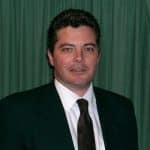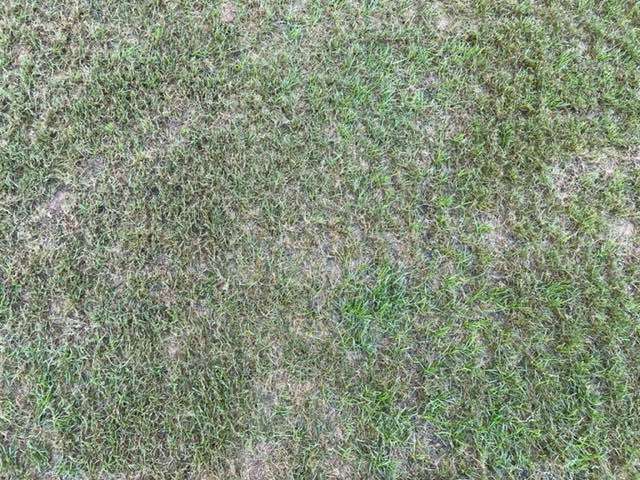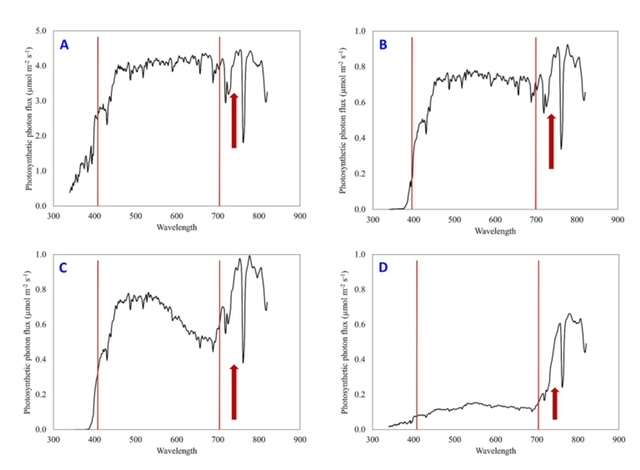The effects of shade on turf.
Grass in shade is unable to grow properly. Shade has an instant and detrimental impact on grass and the long term effects on grass in shade are:
- It causes grass roots to shorten. As turf uses energy to make up for the lack of sunlight, less is available for root growth and development;
- As shade continues, it causes a reduction in turf shoot density and it begins to thin out;
- This lack of light results in the turf stretching out as it looks to find light (etoliation). This results in the grass becoming lighter in colour as cell walls become thinner and weaker;
- Over time the result is grass having less of an ability to take any wear and being unable to recover.
When turf is in shade, it limits photosynthesis and carbohydrate production. Grass in shade also tend to suffer from limited air movement, and this increases disease. Moss and algae also develop as shaded area stay damper.
How to manage grass in shade.
- The most obvious solution is to produce the best shade lawn is to remove what’s causing it. For a lawn in shade, then cutting back trees has a positive impact, but if it’s a stadium, then you obviously haven’t got this luxury;
- The second option is make the right grass selection. If it’s a heavily shaded area, seeding or using a grass that doesn’t handle shade well isn’t going too end well. Instead, choose a shade-tolerant variety to start with. This saves you heartache further down the track;
- Thirdly, contrary to what you may think, cutting back nitrogen is good. The last thing that you want to do is promote lush, shallow-rooted turf when it is already struggling;
- Raising the height of cut is a good thing for grass in shade. It increases the leaf area available to capture the limited amount of light and will counter root shrinkage;
- Overwatering turf in shade is a recipe for disaster. This only encourages disease and encourages shallow rooting grass;
- Use plant growth regulators (PGR’s) like Amigo 120®. This counters turf leaf etiolation.
Dealing with shade – Remove what’s causing the shade.
If you suspect a shade issue, the first step to dealing with it, is identifying if this is the case and it’s cause. A useful tool for this is the Sun Seeker iphone app. You then have to decide what to do to fix it.
If the cause is a grandstand or a wall, it is not practical to remove it. However, if the shade is due to trees or shrubs you can thin these out or remove them. The Sun Seeker app allows you to identify what the cause is and at what time of day it has the greatest impact.
Pruning branches below 3-4 metres makes a massive difference and is a good first step toward producing the best shade lawn. This improves the amount of morning and afternoon sunlight. Thinning the tree canopy will also improve the “quality” of the light that reaches the turf surface.
Quality of light under shade.
The quality of light and how it impacts on turf in shade is discussed in more detail in the article “Using light“.
In the graphs below the x-axis represent the wavelengths of light from 300-900 nm, and the y-axis indicates the quantity of the wavelength of light. When you look at the wavelengths between 400 – 700 nm (between the red lines), you can see that the amount of far-red light (the area above red arrow) is similar to the amount of visible light under natural sunlight. For turfgrass growth, poor light quality is defined as light that has a lower proportion of red to far-red light. This is because grasses specifically “see” and respond to this ratio of red to far-red light.
A) spectral distribution of sunlight (red to far-red = 1.15), B) spectral distribution of sunlight in a greenhouse (red to far-red = 1.05), C) spectral distribution of sunlight passed through a selective plastic filter (red to far-red = 0.70), D) spectral distribution of sunlight under heavy tree shade (red to far-red = 0.40).
Select the appropriate grass type.
Grass in shade varies in its ability to grow. Bearing this in mind turf seed and turf selection plays an important role in any management strategy. As a general rule, warm-season turf needs more light than cool-season turf. Warm-season turfgrass varieties require two or more times the amount of light as cool-season varieties. Light requirements are further complicated by the fact that different cultivars of the same variety can vary in their light requirements. For example all couch cultivars don’t require the same amount of light.
As we will discuss later, buffalo grass is the best warm-season grass to grow in partially shaded lawn. However, be aware that even a Buffalo lawn requires some direct sunlight each day in order to survive. There’s no such thing as a grass that will grow in full shade.
Cool season turf under shade
Of all the cool season varieties, creeping red fescue has the highest shade tolerance. However, all the fine-leaf fescues including hard fescue and Chewings fescue grow in dry, shaded conditions. In moister soil, options to consider include rough bluegrass (Poa trivialis).
Warm season turf under shade.
Firstly, warm Season grasses like Kikuyu and Couch are NOT shade tolerant. Buffalo grass and zoysian are both more shade tolerant but there is no such thing as a truly shade tolerant buffalo grass. A considerable amount of work has been done quantifying how much light turfgrass needs which is summarised below. Equipment such as our wi-fi sensor boxes fitted with PAR light sensors, can monitor light levels 24 x 7, so pretty quickly you get a strong indication of where problems may exist.
Comparative shade tolerance of turf grasses | ||
Shade tolerance | Cool season | Warm season |
High | Fine fescue | |
Colonial bentgrass/poa trivialis | ||
Tall fescue | ||
Creeping bentgrass | ||
Kentucky bluegrass | Buffalograss | |
Perennial ryegrass | Zoysia | |
Kikuyu | ||
Centipedegrass | ||
Carpetgrass | ||
Bahiagrass | ||
Couchgrass | ||
Table showing the Daily Light Integral (DLI) mol-2 d-1 for Turfgrass. | |||
Warm season Turf | |||
Turfgrass Cultivar | Summer | Winter | Spring |
Tifway couch | 21 | 10.6 | 17.9 |
Tifgrand couch | 19.9 | 9.8 | 14.6 |
Celebration | 19.6 | 8.8 | 14.9 |
Seadwarf Seashore paspalum | 13.2 | 8 | 11.9 |
Diamond Zoysia (matrella) | 11.3 | 7.4 | 10.9 |
Palisades zoysia (japonica) | 11.2 | 8.2 | 11.2 |
Cool Season Turf | |||
Creeping bentgrass | |||
Tall fescue | >8.8 | ||
Perennial ryegrass | >20 | ||
Kentucky bluegrass | 11.1-24.1 depending on cultivar | ||
Reduce nitrogen fertilisation.
For grass in shade, a general rule is to reduce the amount of nitrogen that you apply in full sun by 50% as too much nitrogen results in soft succulent growth. Alternatively, adopt a programme of “spoon feeding” nitrogen. This means you apply nitrogen “a little and often”. This gives you considerable control and flexibility so you avoid applying too much in one application.
Raise the height of cut.
Maintain the height of cut as high as possible. This increases the leaf area available for light absorption and photosynthesis. However, this is often not practical on the grass in shade on sports grounds or golf greens. Increasing the height of cut from 3mm to 3.5mm is a 16% increase in height, so a little increase can have big benefits.
Bunnell and McCarty (2004) have shown that a 50% increase in the mowing height from 3.175mm to 4.7mm can cause a big increase the quality of TifEagle couch greens.
Dealing with turf in shade by reducing irrigation.
Light frequent irrigation helps manage the shortening roots caused by grass in shade.
Use PGR’s.
Use of Trinexapac-ethyl (Amigo 120). This helps counter some of the negatives of shade by increasing plant density and decreasing plant shoot etiolation.
- Stier and Rogers (2001) found that the use of PGRs like Trinexapac Ethyl (Amigo 120), reduces shoot elongation and improves photosynthetic efficiency;
- Ervin et al found that although after 2 months, turf quality of creeping bent grass fell below acceptable levels, repeat applications provided 33-44% better quality than untreated;
- We have found that regular tank mix applications of trinexapac-ethyl coupled with supplementary fructose applications delay the decline of turf quality in shade.
Conclusion
So there we have some simple things that you can do to better manage turfgrass and give you the best shade lawn. These range from increasing the height of cut and reducing nitrogen to using plant growth regulators.
© 2022, Gilba Solutions Pty Ltd, All rights reserved

Jerry Spencer
Jerry has an Hons Degree in Soil Science (1988) from Newcastle Upon Tyne University. He then worked as a turf agronomist for the Sports Turf Research Institute (STRI) until 1993.
He gained a Grad Dip in Business Management from UTS in 1999. He has held a number of technical roles for companies such as Arthur Yates (Commercial Technical Manager) and Paton Fertilizers (Organic, turf specialty and controlled release fertiliser) portfolios.
In 2013 he established Gilba Solutions as independent sports turf consultants and turf agronomists. Jerry has written over 100 articles and two books on a wide range of topics such as Turf Pesticides and turfgrass Nutrition which have been published in Australia and overseas.


